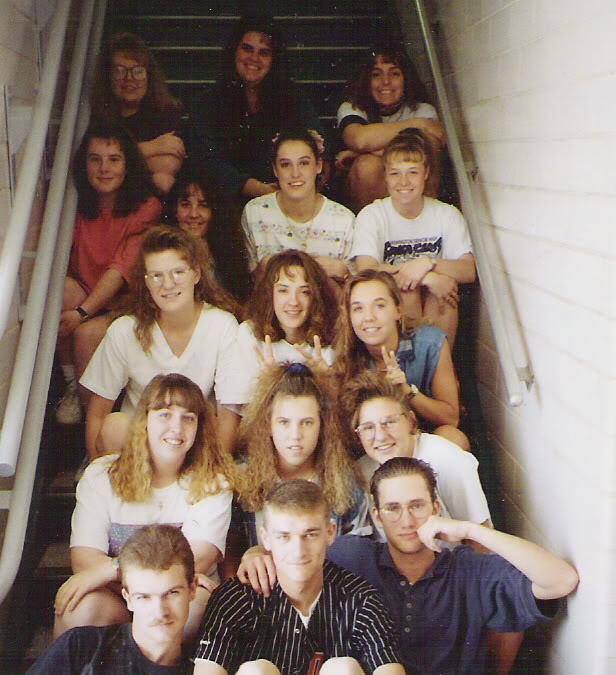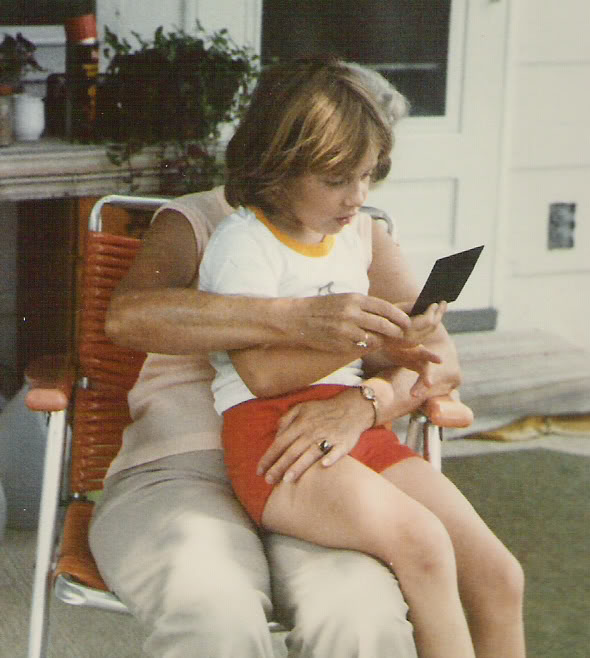While at work yesterday, I received a call from my friend, L, who watches Cordy on Tuesdays. “We have a bit of a situation,” she told me.
My mind immediately jumped to all of the bad things that could have happened. Did she hit her head? Did she hit or bite L’s son? Is everyone OK?
“We all went down for our naps, and I put her in the pack n play like normal. I was in B’s room with him, and felt like I was being watched. I turned around to look, and Cordy was standing in the doorway. I don’t know how she did it, but she climbed out of the pack n play! I didn’t hear a thing!”
It’s official: we have a climber. What’s worse, she’s not just a climber, she’s a stealthy climber.
Cordy was never interested in climbing before this. She’s always been unsteady on her short legs, and frightened of heights, so climbing was never a priority. But over the past month or so, we’ve noticed a new trend in attempting to scale furniture. Last week, she managed to pull herself up onto our tall bed for the first time.
So at 3am, when I was startled awake by frantic screaming, I jumped out of bed and rushed to her room, convinced she had tried to climb out of her crib and had an accident. After all, if she can get over the pack n play hurdle, the crib should be no problem at all for her. Thankfully, she was still in the crib, but her foot was once again jammed between slats and wedged against the wall. “I’m stuck, I’m stuck!” she cried.
I freed her foot, which was greeted with a loud, “You did it!” from Cordy. (Who says parents don’t need praise and affirmation, too?) But then she practically threw herself over the crib rail into my arms, clearly not ready to go back to bed. Remember: it’s 3am, I’m pregnant and groggy, and just had 35 pounds of off-center weight added to me. This can’t go well.
Stepping away from her crib, I lost my balance. I tried to make it the two steps over to the glider, but put my right foot through her bead puzzle (seen here when she was younger), which caused me to pitch forward even more from pain and no solid footing. At that point, it was impossible not to fall, so I focused on trying not to land on my belly or drop Cordy. We landed on the glider footstool, with Cordy’s head only barely tapping the dresser behind the footstool. My upper torso took most of the fall, although I also have a deep scrape down my right leg from the bead puzzle.
Still trying to keep a hold on Cordy, I pulled my leg free from the bead puzzle. While I expected Cordy to be upset by the fall, she wasn’t – she just didn’t want back in her crib. We went downstairs for a few moments, where she tried to talk me into turning on the TV. I gave my most convincing lie: “I’m sorry, sweetie, it’s still night-time, and the TV doesn’t work at night.” We’ll see how much longer I can keep up that lie. I’m hoping at least until she’s 10.
She eventually calmed down from all the excitement, and we went back upstairs. She cried when I put her in her crib and left the room, which meant I couldn’t go back to sleep until I was certain she wasn’t going to try throwing herself over the crib rail again. Finally, a little after 4am, she calmed down, had a lively discussion with her stuffed animals, and then all was quiet. I laid awake in bed a little longer, waiting to feel a few kicks from the baby to make sure the fall didn’t hurt her. I was asleep by 4:30.
Now that we’re facing a climbing toddler, it’s time to push harder for her to sleep in her toddler bed. She fell asleep in her bed for her nap on Sunday, but she’s been unwilling to try at night-time. I tried it last night, but she was too scared to stay in the bed. I don’t want to spend every night worrying that she will break a bone or give herself a concussion falling out of her crib.
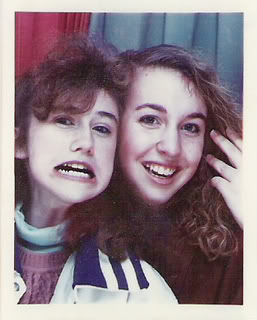 Pre-9th grade: The comb-over bangs (please excuse the Brooke Shields power eyebrows – I had yet to discover tweezers)
Pre-9th grade: The comb-over bangs (please excuse the Brooke Shields power eyebrows – I had yet to discover tweezers)
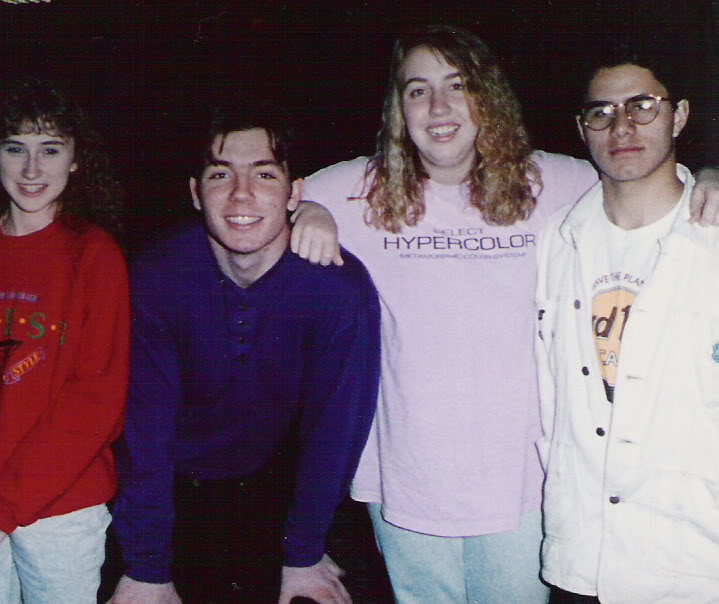 10th grade – trying to grow them out, going for the comb-over method again (and check out the Hypercolor tee!)
10th grade – trying to grow them out, going for the comb-over method again (and check out the Hypercolor tee!)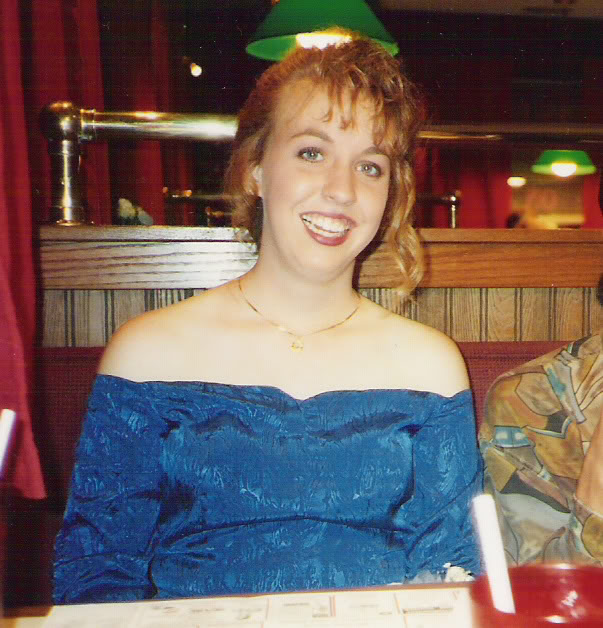 11th grade – so much for growing them out – now they’re wispy and stuck together thanks to too much Aquanet
11th grade – so much for growing them out – now they’re wispy and stuck together thanks to too much Aquanet